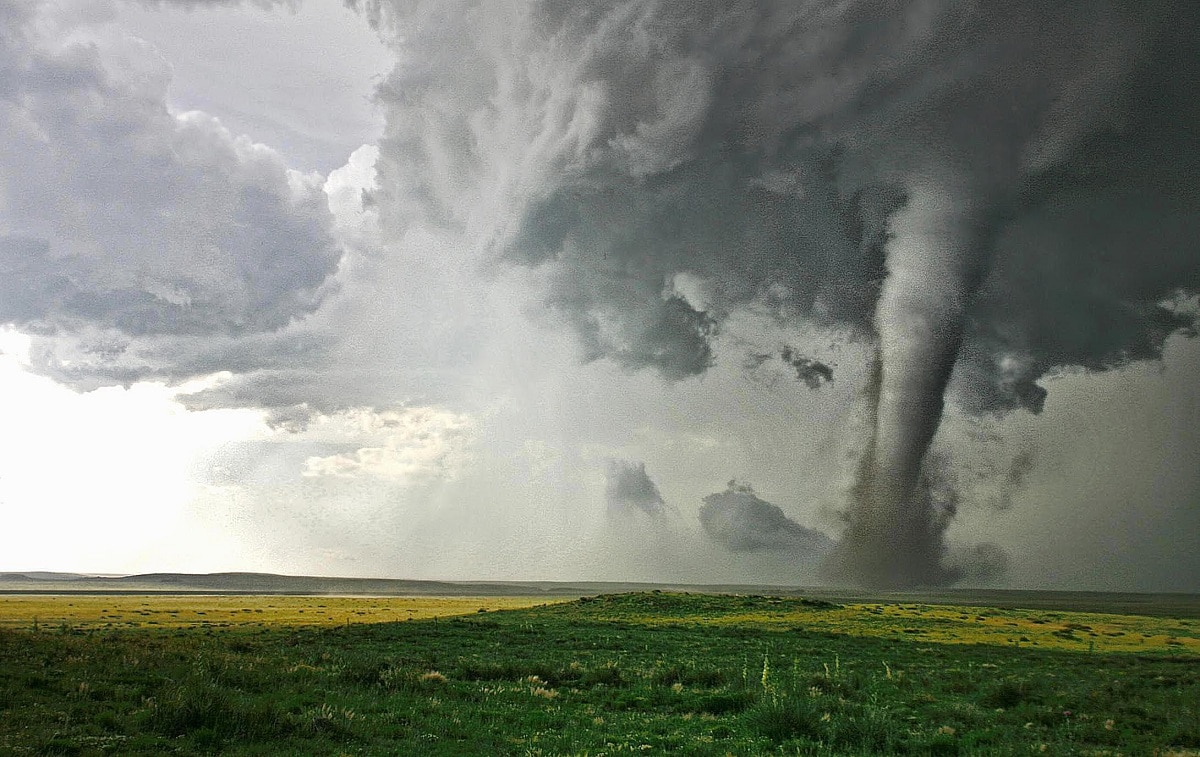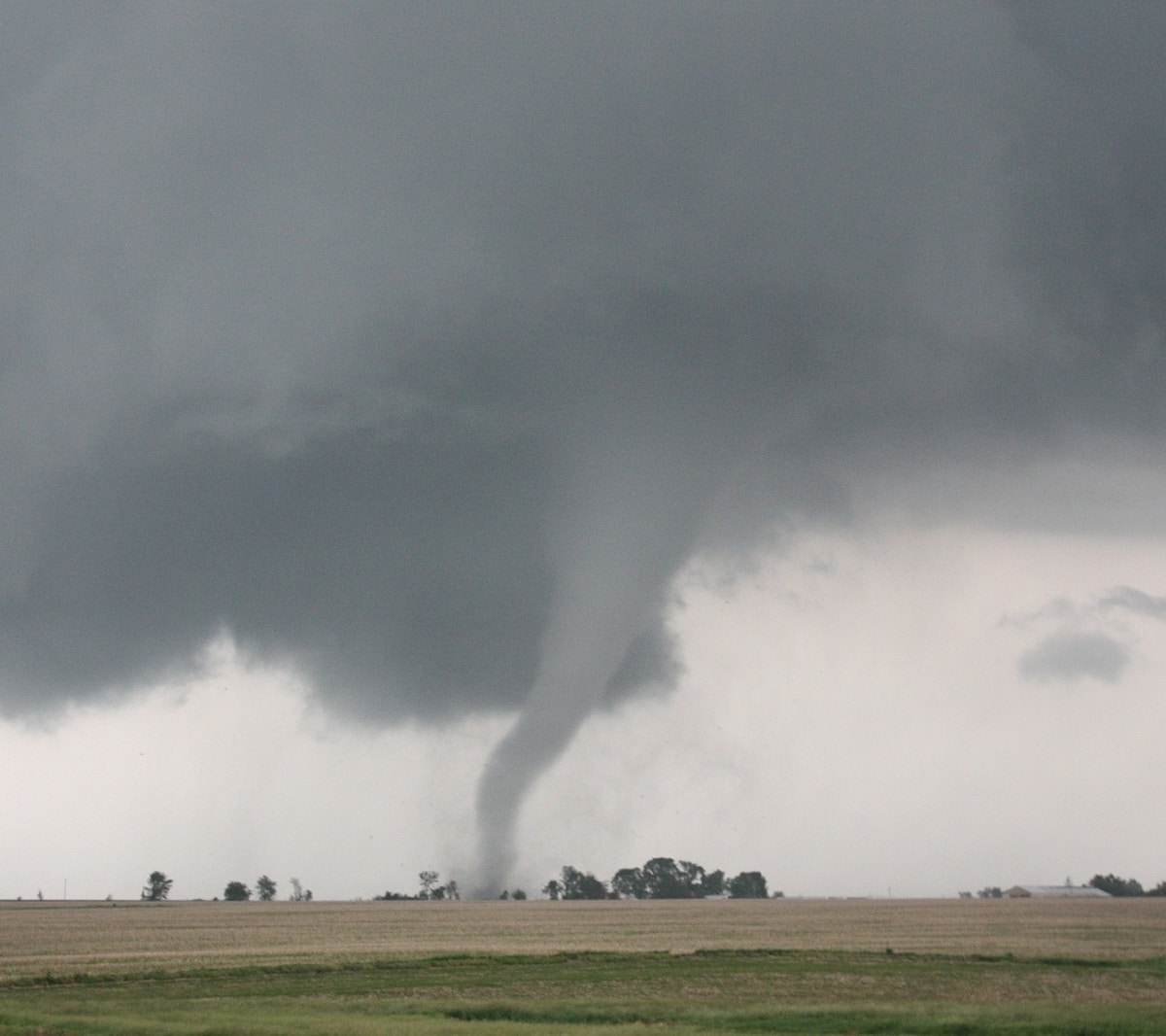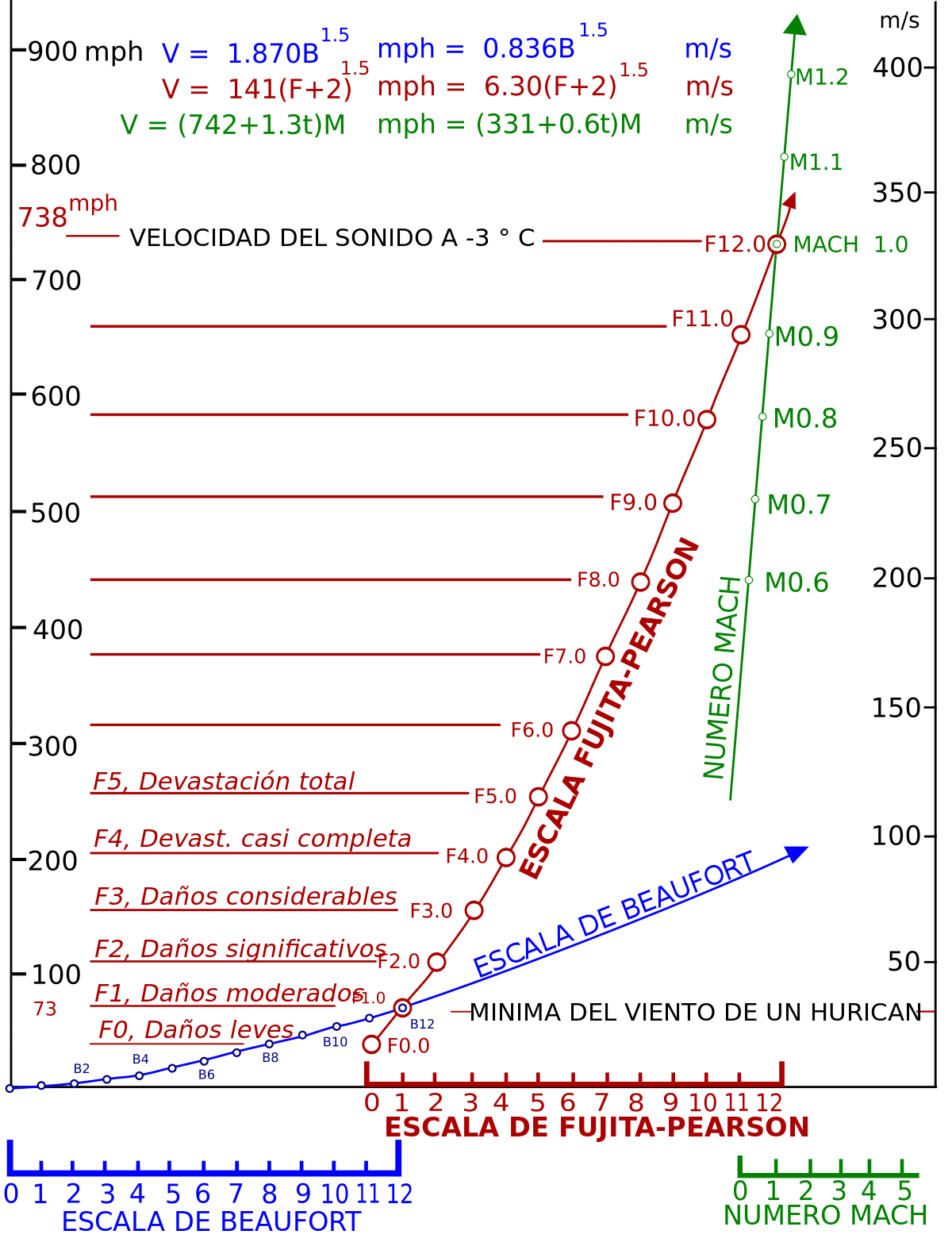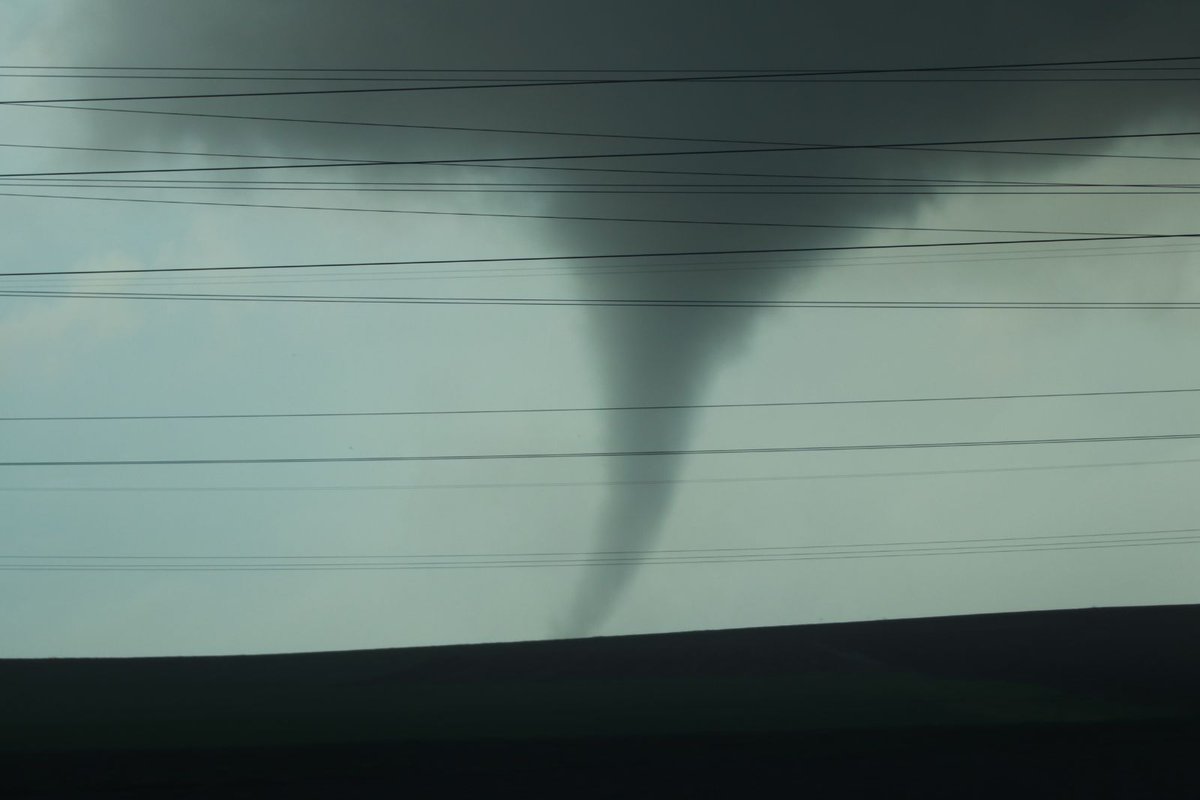
As you might expect, just as there is a scale to measure hurricanes and earthquakes, there is also a scale to measure the intensity of a tornado. This scale is known as Fujita scale. It is a scale that represents the levels of intensity and capacity to cause damage from tornadoes.
In this article we are going to tell you about all the characteristics and importance of the Fujita scale.
What is a tornado

First of all, we must know what a tornado is and what its characteristics are. A tornado is a mass of air that forms with high angular velocity. The ends of the tornado are located between the surface of the Earth and a cumulonimbus cloud. It is a cyclonic atmospheric phenomenon with a large amount of energy, although they usually last a short time.
The tornadoes that are formed can have different sizes and shapes and the time they usually last round between a few seconds and more than an hour. The best known tornado morphology is funnel cloud, whose narrow end touches the ground and is usually surrounded by a cloud that is dragging all the dust and debris around it.
The speed that tornadoes can reach are between 65 and 180 km / h and can be 75 meters wide. Tornadoes do not sit still where they form, but rather move across the territory. They normally travel up to several kilometers before disappearing.
The most extreme can have winds with speeds that can rotate at 450 km / h or more, measure up to 2 km wide and remain touching the ground for more than 100 km of route.
Fujita scale

Once we know what a tornado is, we see that the Fujita scale is used to estimate the intensity of the tornado. It is a scale that is responsible for classifying tornadoes according to severity based on the damage they can cause. This scale was created in 1971 by the American researcher Tetsuya Theodore Fujita, a meteorologist in collaboration with Allan Pearson, the Center for Storm Prediction (storm forecasting) in the United States. It was immediately adopted by the scientific and climate community.
The Fujita scale attempts to establish the force of the wind and the capacity to cause damage. Let's see what are the different points that this tornado scale has:
- Wind force F0: It is a part of the scale that describes the existence of wind speeds between 60-120km / h. Here the damage observed is the breaking of branches, deformation of traffic signs, crooked television antennas, etc. They are small damages that do not cause serious problems.
- Wind force F1: They are moderate winds with speeds between 120-180 km / h. Causing damage such as breaking floor tiles, overturned trailers, wrecked cars, etc.
- Wind force F2: These are winds with speeds between 180 and 250 km / h. With this speed of winds, we see that the damage that occurs is breakage of walls and roofs of buildings.
- Wind force F3: is the intensity that picks up the winds with speeds between 250 and 330 km / h. With this wind speed, we see that there is damage that can be observed, such as the total breakage of the walls and roofs of the houses, completely cut down forests, etc. In these cases, we can see the walls and roofs of the houses flying due to the intense speed of the wind.
- Wind force F4: corresponds to the wind speed between 330 to 420 km / h. Here we see more intensively produced damage such as buildings without foundations and vehicles completely overturned. The intensity of these blair tornadoes quite worrying since it takes human lives.
- Wind force F5: corresponds to the most extreme winds with values ranging from 420 to 510 km / h. The damage caused is completely destroyed buildings, displaced trains, etc. It is the highest level on the Fujita scale and the most worrying.
Aspects of the Fujita scale

Some aspects of this scale of tornadoes must be taken into account, such as that it does not take into account the quality of the construction of the damaged structures. That after an important aspect to take into account since there are many buildings that have a low had since they are old or are built with cheap materials. In these cases, the intensity of the tornado cannot be measured as a function of the destruction capacity with the same accuracy.
There are numerous studies that have shown that the Fujita scale overestimates the wind speed categories 3, F4 and F5. This is because the quality of the materials from which the buildings that are uprooted during tornadoes are built are not taken into account. Therefore, there is an improved version of this scale that was created by the US National Weather Service in 2006 and is now based on 28 damage indicators, taking into account the types of buildings or structures. The Enhanced Fujita Scale or EF (Enhance Fujita) is a rating scale for the strength of tornadoes due to damage caused. It has been used in the United States since the summer of 2007.
Improved scale
Let's see what are the different points that are analyzed in the improved Fujita scale:
- EF0 : Parts partially removed roof (tiles, tiles), gutters, chimneys and damaged siding.
- EF1 : Roof parts completely removed, exterior doors removed, windows broken.
- EF2 - Roofs blown on solid houses, houses completely destroyed, large trees broken or uprooted.
- EF3: The floors of solid destroyed houses, overturned trains, barked trees, raised cars.
- EF4 - Well built houses and blown cars, many objects are turned into missiles.
- EF5: Solid houses washed away and objects the size of a car are sucked into the air.
I hope that with this information you can learn more about the Fujita scale and its characteristics.